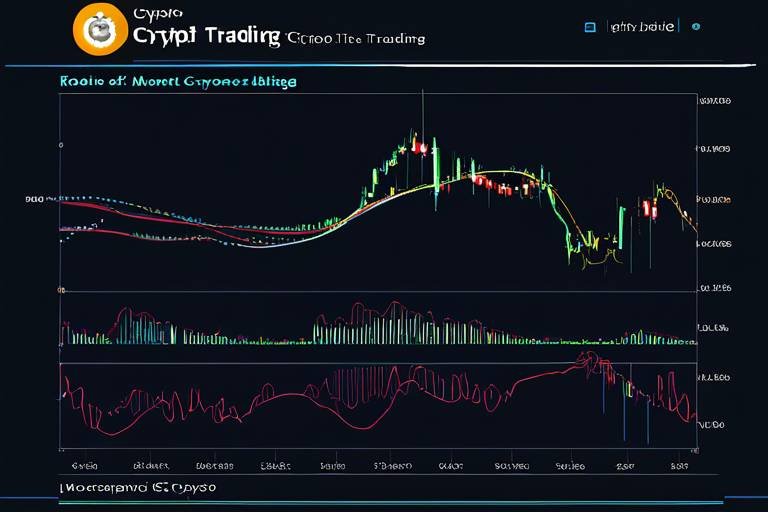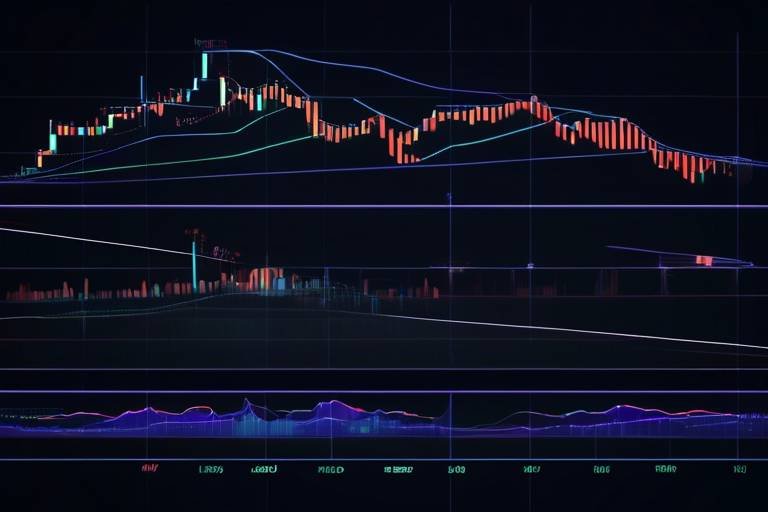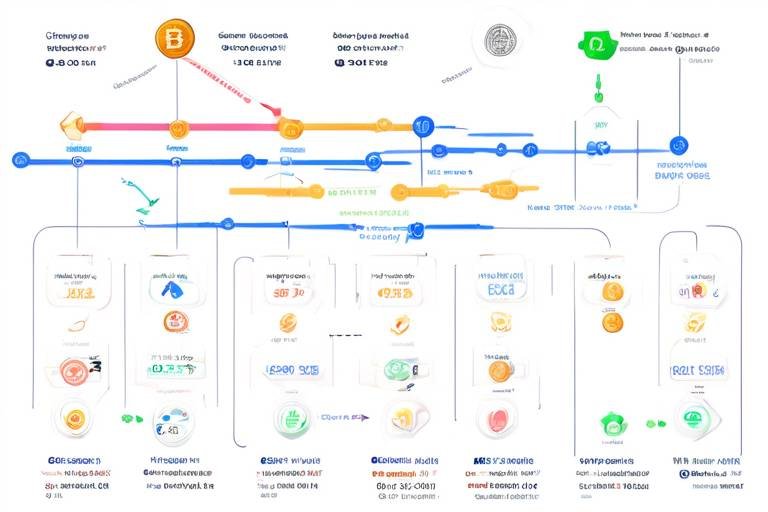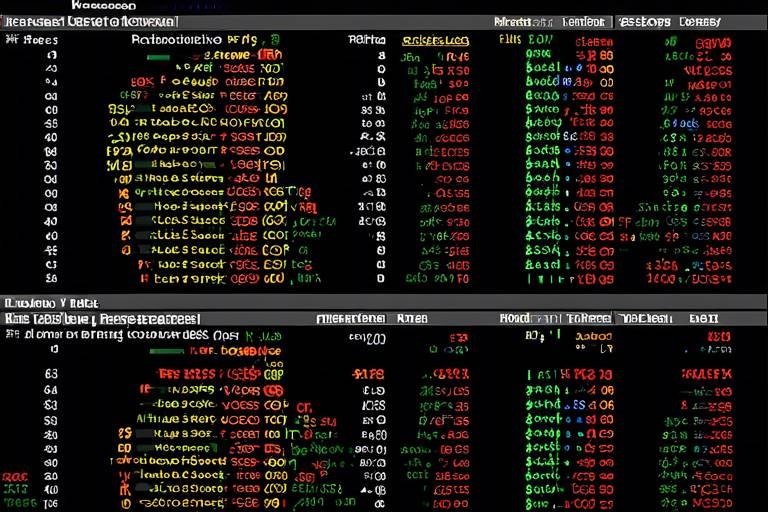How to Develop a Winning Trading Mindset
In the world of trading, having a winning mindset is more than just understanding charts and market trends; it's about cultivating a psychological framework that supports your decisions and actions. Think of your mindset as the foundation of a house—without a solid base, everything else can crumble. Emotional discipline, strategic thinking, and a commitment to continuous learning form the pillars of this foundation. In this article, we will explore how to develop a winning trading mindset that not only enhances your trading performance but also helps you navigate the inevitable ups and downs of the market.
Emotional discipline is crucial for traders to maintain control over their decisions. Imagine being on a roller coaster; the highs and lows can be exhilarating, but if you don't keep your wits about you, you might just lose your lunch! In trading, emotions like fear and greed can lead to impulsive decisions that result in significant losses. To manage your emotions, consider implementing techniques such as mindfulness practices, journaling your trades, or even setting strict rules for when to enter and exit trades. These strategies can help you remain calm and collected, allowing you to make decisions based on logic rather than emotion.
A strategic approach to trading involves setting clear goals and developing a robust trading plan. Think of your trading strategy as a roadmap; without one, you might end up lost in the wilderness of market fluctuations. The importance of strategy cannot be overstated, as it enhances decision-making and provides a framework for evaluating potential trades. A well-crafted trading plan should outline your objectives, risk tolerance, and specific criteria for entering and exiting trades. This structured approach will not only keep you focused but also help you navigate the complexities of the market.
Setting achievable trading goals helps maintain focus and motivation. It's easy to get carried away and dream of hitting the jackpot, but unrealistic expectations can lead to frustration and burnout. By setting realistic goals, you create a roadmap that guides your trading journey. For instance, instead of aiming for a 100% return in a month, consider setting a goal of a 10% return over the same period. This way, you can celebrate small victories while building confidence and experience.
Understanding the difference between short-term and long-term goals can guide traders in their decision-making processes. Short-term goals might include daily or weekly profit targets, while long-term goals could involve overall portfolio growth over several years. Balancing both types of goals effectively can help you maintain focus on immediate tasks while keeping your eyes on the bigger picture. For example, if your long-term goal is to retire early through trading, your short-term goals should align with that vision, focusing on consistent, manageable gains.
Regularly measuring progress against set goals is vital for improvement. Just like a coach tracks an athlete's performance, you should track your trading performance to identify areas for growth. Consider maintaining a trading journal where you note your trades, strategies, and outcomes. This practice not only helps you reflect on your decisions but also allows you to recalibrate your goals as necessary for sustained growth. By doing so, you'll be better equipped to adapt to changing market conditions and refine your approach over time.
The trading landscape is constantly evolving, making continuous learning essential. Think of the market as a river that never stops flowing; if you don't keep learning, you risk getting swept away. Traders must stay informed about market trends, economic indicators, and new trading technologies to remain competitive. This could involve reading books, attending webinars, or joining trading communities where you can share insights and strategies with fellow traders. Embracing a mindset of lifelong learning will help you adapt your strategies and knowledge to stay ahead of the curve.
A growth mindset encourages traders to view challenges as opportunities for learning. Instead of seeing setbacks as failures, consider them stepping stones to success. This perspective fosters resilience and adaptability, which are crucial traits for overcoming the inevitable hurdles in trading. Remember, every successful trader has faced challenges; what sets them apart is their ability to bounce back and learn from those experiences.
Learning from failure is a key component of a growth mindset. When you encounter a loss, take the time to analyze what went wrong. Was it a poor decision based on emotion? Did you fail to follow your trading plan? By dissecting your mistakes, you can extract valuable lessons that will inform your future trades. Embracing failure as part of the learning process not only builds your trading skills but also strengthens your emotional discipline.
Feedback and mentorship can significantly enhance a trader's skills. Just as athletes rely on coaches for guidance, traders can benefit from the insights of experienced professionals. Seeking mentorship from seasoned traders can provide you with new perspectives, strategies, and techniques. Additionally, engaging with trading communities allows you to exchange ideas and receive constructive feedback on your performance. This collaborative approach fosters growth and improvement, helping you develop a more robust trading mindset.
- What is emotional discipline in trading?
Emotional discipline refers to the ability to manage your emotions and make rational decisions, especially in high-pressure situations. - How can I set realistic trading goals?
Start by assessing your current skills and market conditions, then set achievable targets that align with your long-term objectives. - Why is continuous learning important in trading?
The trading environment is dynamic; continuous learning helps you adapt to changes and refine your strategies for better performance. - How can I learn from my trading failures?
By analyzing your mistakes and understanding what went wrong, you can extract lessons that will inform your future trading decisions.
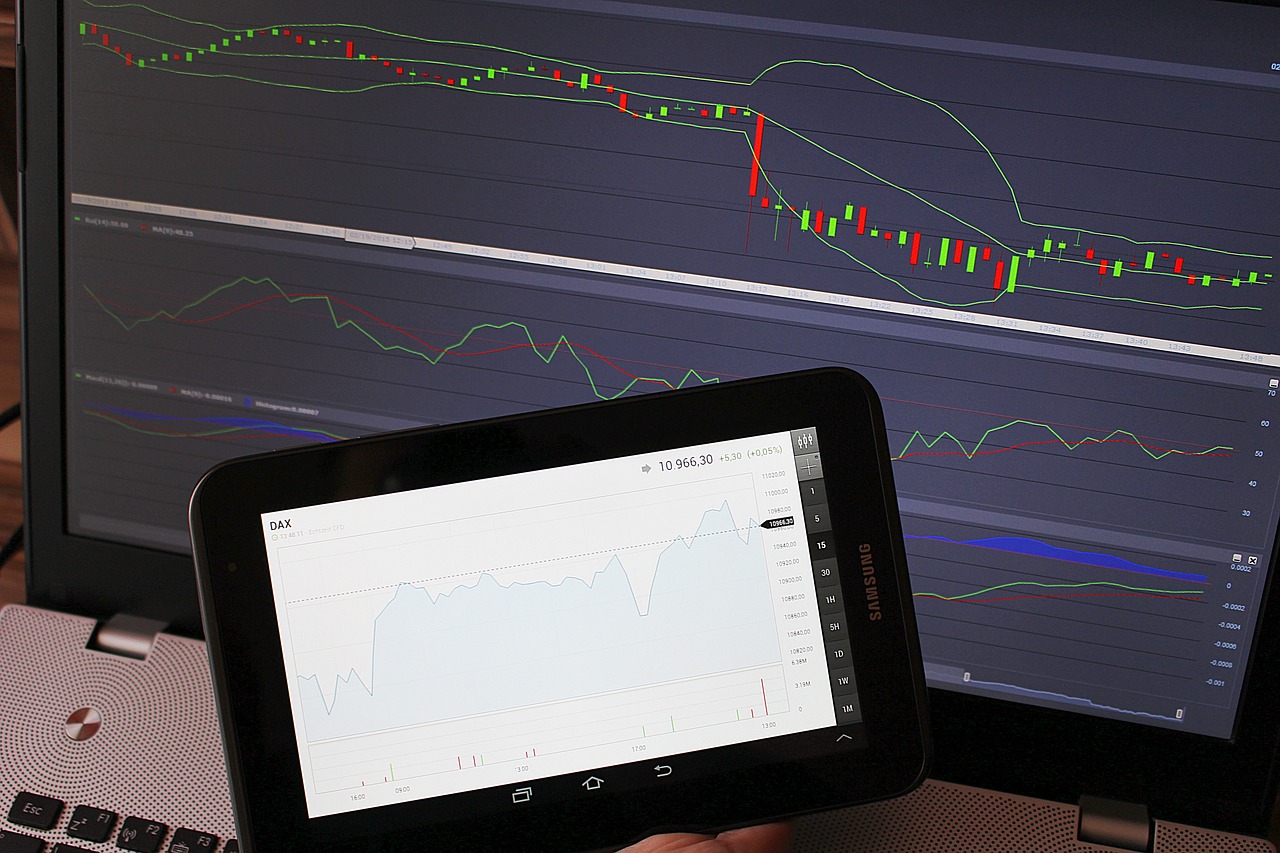
Understanding Emotional Discipline
Emotional discipline is the backbone of successful trading. Imagine you're on a roller coaster, and every twist and turn represents the unpredictable nature of the market. If you let your emotions dictate your decisions, you might end up screaming in fear or throwing your hands up in reckless abandon. Instead, maintaining emotional discipline allows you to stay calm and collected, making decisions based on strategy rather than impulse.
One of the primary challenges traders face is the fear of missing out (FOMO) or the anxiety that comes with potential losses. These feelings can lead to impulsive trades that often result in significant losses. To combat this, traders can employ several techniques to manage their emotions effectively:
- Mindfulness Meditation: Practicing mindfulness helps you stay grounded, allowing you to observe your thoughts and feelings without acting on them.
- Journaling: Keeping a trading journal can help you track your emotions during trades, providing insights into your emotional triggers and helping you learn from past experiences.
- Setting Limits: Establishing clear stop-loss orders can help mitigate losses and reduce the emotional burden of watching your trades fluctuate.
Moreover, it's essential to recognize that emotional discipline isn't just about suppressing feelings; it's about understanding and managing them. Emotions like fear and greed are natural, but they shouldn't control your trading decisions. By developing a structured approach to trading, you can create an environment where emotions are acknowledged but not allowed to steer your ship.
In addition to these techniques, traders can benefit from establishing a routine that promotes emotional stability. This could include regular breaks to clear your mind, physical exercise to reduce stress, or even engaging in hobbies that provide a sense of accomplishment outside of trading. Just as athletes train their bodies, traders need to train their minds to respond to market fluctuations with a level-headed approach.
Ultimately, mastering emotional discipline is a journey, not a destination. The more you practice and refine your skills, the better equipped you'll be to handle the inevitable ups and downs of trading. Remember, the market is a marathon, not a sprint. With a solid foundation in emotional discipline, you're setting yourself up for long-term success.
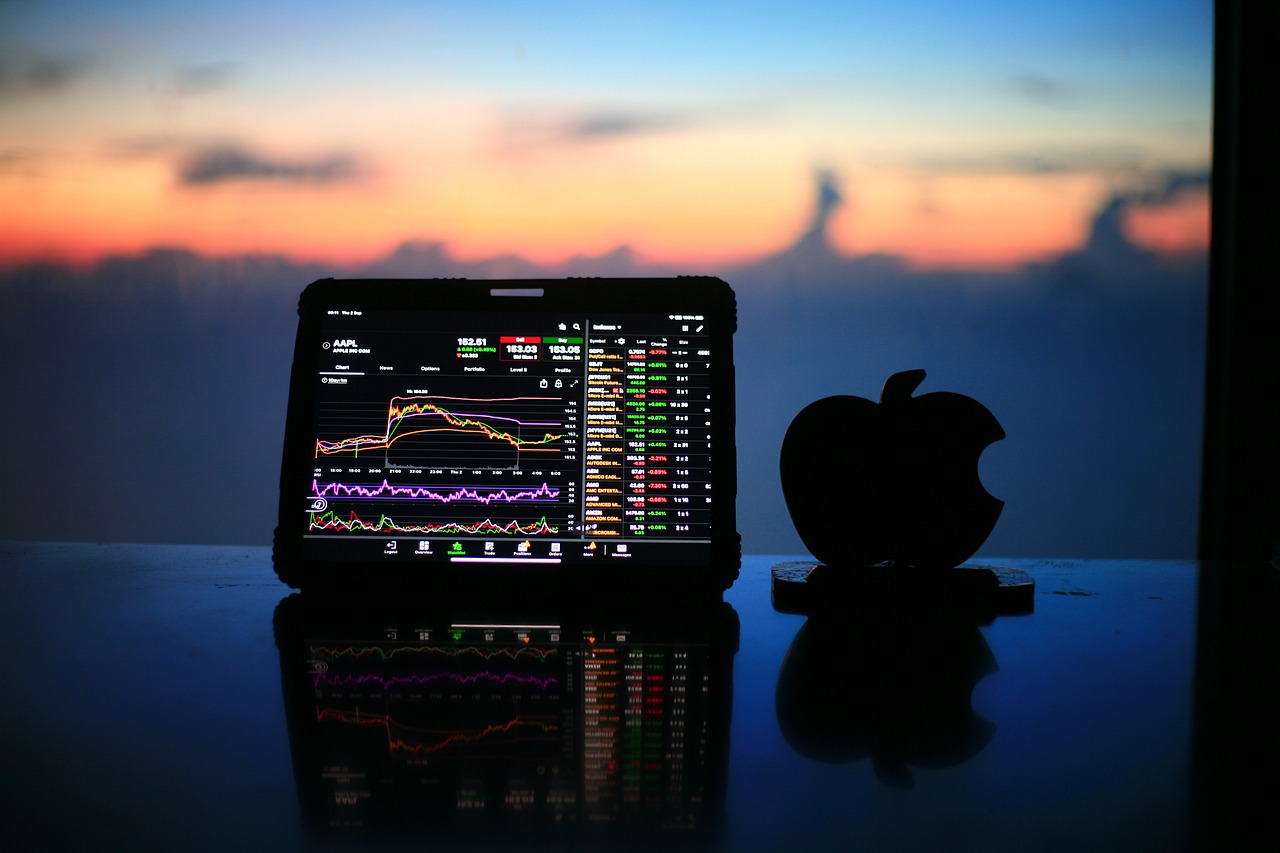
Building a Strategic Approach
When it comes to trading, having a strategic approach is not just a luxury; it's a necessity. Think of trading like navigating through a dense forest. Without a map or a clear plan, you might find yourself lost, wandering aimlessly, and ultimately missing out on the treasures that lie within. A well-structured trading strategy acts like that map, guiding you through the unpredictable terrain of the market.
At the heart of a successful trading strategy is the establishment of clear goals. Goals serve as your compass, helping you stay focused and motivated. But it’s not enough to just set any goals; they need to be specific, measurable, achievable, relevant, and time-bound (SMART). For instance, rather than saying, "I want to make more money," you could set a goal like, "I aim to increase my trading account by 20% within the next six months." This level of specificity provides clarity and direction.
Moreover, a robust trading plan should encompass various elements, including risk management, entry and exit strategies, and market analysis. Each component plays a vital role in enhancing your decision-making process. For example, risk management is crucial because it helps you determine how much of your capital you are willing to risk on a single trade. This can be summarized as follows:
| Component | Description |
|---|---|
| Risk Management | Determine the percentage of your capital to risk on each trade. |
| Entry Strategy | Define the criteria for entering a trade. |
| Exit Strategy | Establish when to close a trade, whether in profit or loss. |
| Market Analysis | Use technical and fundamental analysis to inform your trades. |
It's also essential to regularly revisit and adjust your trading plan in response to market conditions. The market is dynamic, and what works today may not work tomorrow. By keeping your strategy flexible and adaptable, you can better navigate changes and maintain a competitive edge.
Another critical aspect of building a strategic approach is understanding the difference between short-term and long-term goals. Short-term goals might include achieving a certain number of profitable trades each week, while long-term goals could focus on building a sustainable trading career. Balancing these goals is crucial; short-term wins can provide motivation and confidence, while long-term goals help you stay focused on your overall vision.
Finally, measuring your progress is vital for sustained growth. Regularly assessing your performance against your established goals allows you to identify areas for improvement and recalibrate your strategies as needed. You might consider keeping a trading journal where you note down your trades, outcomes, and emotional responses. This practice not only enhances accountability but also fosters a deeper understanding of your trading behavior.
In conclusion, building a strategic approach to trading is like constructing a solid foundation for a house. Without it, everything else is built on shaky ground. By setting clear goals, developing a comprehensive trading plan, and regularly measuring your progress, you can enhance your chances of success in the ever-evolving trading landscape.
- What is the most important aspect of a trading strategy? The most important aspect is having clear goals that guide your trading decisions.
- How often should I review my trading plan? It’s advisable to review your trading plan regularly, at least once a month, or after significant market changes.
- Can I trade without a strategy? While it’s possible, trading without a strategy is risky and often leads to impulsive decisions and losses.

Setting Realistic Goals
When it comes to trading, setting realistic goals is like having a roadmap for a long journey. Without a clear destination, you might find yourself lost in the vast world of markets, making impulsive decisions that can lead to costly mistakes. Realistic goals help keep you grounded, guiding your trading journey with purpose and clarity. So, how do you go about setting these goals?
First off, it’s essential to understand what you want to achieve. Are you looking to generate a steady income, or are you aiming for long-term wealth accumulation? By identifying your primary objective, you can tailor your goals to align with your trading style. For instance, if you're a day trader, your goals might focus on daily profits, while a swing trader might prioritize weekly or monthly targets.
Moreover, it’s crucial to set SMART goals—Specific, Measurable, Achievable, Relevant, and Time-bound. This framework not only clarifies your objectives but also makes it easier to track your progress. Here’s a quick breakdown:
| SMART Criteria | Explanation |
|---|---|
| Specific | Your goal should be clear and specific, answering the questions of what, why, and how. |
| Measurable | Establish criteria for measuring progress toward your goal. |
| Achievable | Your goal should be realistic and attainable to be successful. |
| Relevant | Ensure that your goal matters to you and aligns with your broader objectives. |
| Time-bound | Set a deadline to create a sense of urgency. |
For example, instead of saying, "I want to make money trading," a SMART goal would be, "I want to earn $500 per month from trading by the end of the next quarter." This goal is clear, measurable, and time-bound, providing a concrete target to strive for.
Another important aspect of setting realistic goals is to balance ambition with practicality. While it’s great to aim high, setting overly ambitious goals can lead to frustration and burnout. It’s like trying to sprint a marathon; you’ll exhaust yourself before reaching the finish line. Instead, break down your larger objectives into smaller, manageable milestones. This way, you can celebrate small victories along the way, keeping your motivation high.
Finally, remember that flexibility is key. The trading landscape is ever-changing, and sometimes, you might need to adjust your goals based on market conditions or personal circumstances. Regularly revisiting your goals ensures they remain relevant and achievable, allowing you to pivot when necessary.
In summary, setting realistic goals in trading is not just about having a destination; it’s about creating a sustainable path to get there. By being specific, measuring your progress, ensuring achievability, keeping relevance in mind, and sticking to a timeline, you can develop a focused approach that enhances your trading experience and leads to long-term success.
- What are the common mistakes traders make when setting goals? Many traders set vague or overly ambitious goals without a clear plan, leading to disappointment and a lack of focus.
- How often should I review my trading goals? It's advisable to review your goals regularly, perhaps monthly or quarterly, to ensure they remain relevant and achievable.
- Can I change my trading goals? Absolutely! Flexibility is crucial in trading. Adjust your goals as needed based on your performance and market conditions.
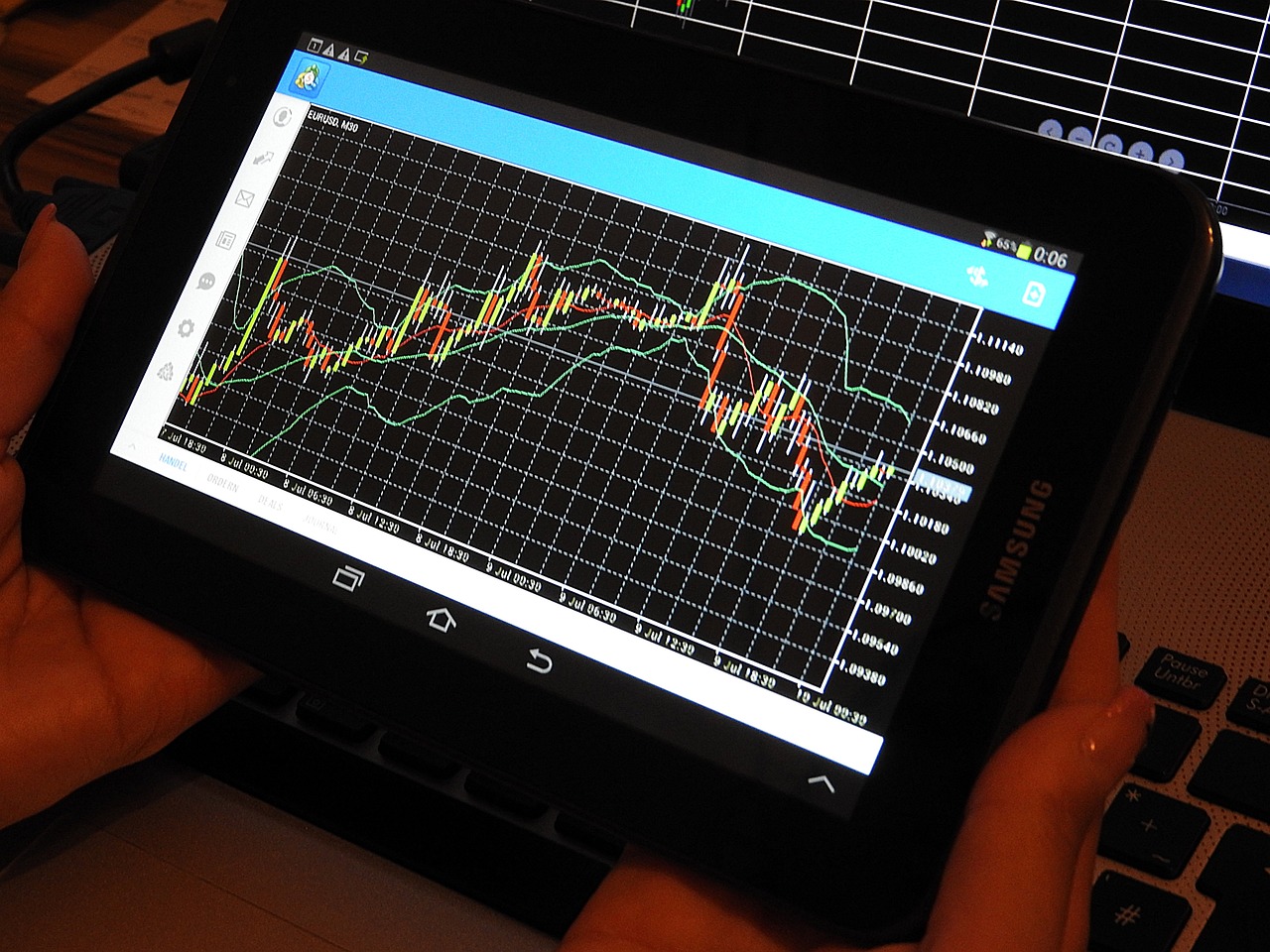
Short-term vs. Long-term Goals
When it comes to trading, understanding the distinction between short-term and long-term goals is crucial for crafting a successful strategy. Think of short-term goals as the stepping stones that lead you toward your ultimate destination—your long-term goals. While short-term goals can provide immediate focus and motivation, long-term goals help you maintain a broader perspective on your trading journey. So, how do you balance these two types of goals effectively?
Short-term goals are typically more tactical in nature. They could be as simple as aiming to make a certain number of trades per week or achieving a specific percentage return on investment within a month. These goals allow you to measure your progress frequently and make necessary adjustments based on market conditions. For example, you might set a short-term goal to improve your win-loss ratio or to refine your analysis techniques. However, it’s essential to ensure that these goals are realistic and grounded in your current trading capabilities.
On the other hand, long-term goals are more strategic and visionary. They often encompass broader ambitions, such as becoming a consistently profitable trader over several years or reaching a specific financial milestone, like saving for retirement or buying a home. Long-term goals require patience and discipline, as the path to achieving them is usually filled with ups and downs. Just as a marathon runner trains for months to complete a race, traders must cultivate their skills and knowledge over time to reach their long-term aspirations.
To illustrate the relationship between short-term and long-term goals, consider the following table:
| Type of Goal | Description | Timeframe |
|---|---|---|
| Short-term Goals | Focused on immediate results, such as daily or weekly trading performance. | Days to Months |
| Long-term Goals | Encompasses broader ambitions, such as overall profitability and financial security. | Years |
So, how do you effectively balance these two types of goals? One approach is to use your short-term goals as a means to achieve your long-term objectives. For instance, if your long-term goal is to accumulate a certain amount of capital, set short-term goals that focus on consistent returns, risk management, and skill development. This way, every small victory contributes to your larger vision.
Moreover, regularly revisiting and adjusting your goals is essential. Life and markets are unpredictable, and what worked yesterday might not be effective tomorrow. By keeping your goals flexible, you can adapt to changing circumstances while still maintaining your focus on the bigger picture.
In conclusion, recognizing the interplay between short-term and long-term goals can significantly enhance your trading strategy. By setting clear, achievable short-term goals that align with your long-term vision, you can create a roadmap that keeps you motivated and on track toward trading success.
- What is the main difference between short-term and long-term trading goals? Short-term goals focus on immediate performance, while long-term goals aim for broader financial ambitions over an extended period.
- How often should I reassess my trading goals? It's advisable to review your goals regularly, perhaps every month or quarter, to ensure they remain relevant and achievable.
- Can short-term goals undermine long-term success? If not managed properly, an excessive focus on short-term gains can lead to impulsive decisions that may jeopardize long-term objectives. Balance is key.

Measuring Progress
Measuring progress in trading is not just about counting profits or losses; it's about understanding your journey as a trader and how far you've come. Just like a marathon runner tracks their distance and speed, traders need to keep a close eye on their performance metrics to ensure they are on the right path. This involves setting up a system to monitor various aspects of your trading activities, which can help you identify strengths and weaknesses in your approach.
To effectively measure progress, consider implementing a trading journal. This journal will serve as your personal log where you can document every trade, including the rationale behind each decision, the outcome, and your emotional state at the time. By reviewing this journal regularly, you can gain valuable insights into your trading patterns. Here’s a simple table to illustrate what to include in your trading journal:
| Date | Trade Type | Entry Point | Exit Point | Profit/Loss | Emotional State | Notes |
|---|---|---|---|---|---|---|
| 2023-10-01 | Buy | $100 | $120 | +$20 | Confident | Good analysis |
| 2023-10-02 | Sell | $110 | $90 | -$20 | Frustrated | Rushed decision |
Another effective method for measuring progress is to set specific performance metrics. These can include your win rate, average profit per trade, and maximum drawdown. By evaluating these metrics over time, you can gauge whether your trading strategy is effective. For example, if your win rate is consistently below 50%, it might be time to reassess your approach or seek additional education.
Moreover, regularly recalibrating your goals is essential for sustained growth. As you evolve as a trader, your objectives may shift, and what once seemed ambitious might now feel inadequate. By keeping your goals aligned with your current skills and market conditions, you can maintain motivation and ensure that you are always moving forward.
Lastly, don't forget to celebrate your achievements, no matter how small. Recognizing progress fosters a positive mindset and encourages you to continue striving for improvement. It’s crucial to take a moment to reflect on your journey, appreciate the hard work you've put in, and use those moments of success as fuel for your future endeavors.
- What is the best way to start a trading journal? Start by documenting every trade you make, including details like entry and exit points, your thought process, and emotional state.
- How often should I review my trading performance? It's advisable to review your performance weekly or monthly to identify trends and areas for improvement.
- What metrics should I focus on to measure my trading success? Key metrics include win rate, average profit per trade, and maximum drawdown.
- How can I stay motivated in my trading journey? Set realistic goals, celebrate small victories, and continually educate yourself to keep your passion alive.

Continuous Learning and Adaptation
In the world of trading, the only constant is change. Markets are influenced by a multitude of factors, from economic indicators to geopolitical events, and as such, traders must be prepared to adapt their strategies accordingly. Continuous learning is not just a luxury; it’s a necessity for anyone looking to thrive in this fast-paced environment. Think of the trading landscape as a living organism; it evolves, grows, and sometimes even shifts dramatically overnight. If you’re not learning and adapting, you risk being left behind.
One of the most effective ways to foster continuous learning is by immersing yourself in a variety of educational resources. This can include books, online courses, webinars, and even podcasts. Each medium offers unique insights that can enhance your understanding of market dynamics. For instance, while a book might provide a comprehensive overview of technical analysis, a podcast can deliver real-time discussions on current market trends. By diversifying your learning sources, you can gain a well-rounded perspective that equips you to make informed decisions.
Moreover, actively engaging with trading communities can significantly bolster your learning process. Online forums, social media groups, and local meetups create opportunities to share experiences, strategies, and insights. Here, you can ask questions, seek advice, and even share your own knowledge. It’s akin to being part of a study group where everyone contributes to each other’s growth. This collaborative environment not only enhances your skills but also builds a network of like-minded individuals who can support you on your trading journey.
Another critical aspect of continuous learning is the practice of self-reflection. After each trade, take a moment to analyze what went well and what didn’t. Did you stick to your trading plan? Were your emotions in check? This reflective practice can be incredibly enlightening. By identifying patterns in your decision-making process, you can pinpoint areas for improvement. Consider keeping a trading journal where you document your trades, thoughts, and feelings. Over time, this journal can serve as a powerful tool for personal growth and adaptation.
Adapting to the ever-changing market conditions also means being open to feedback. Whether it’s from a mentor, a peer, or even a trading coach, constructive criticism can provide invaluable insights. Embrace the idea that feedback is not a personal attack but rather a pathway to improvement. By being receptive to others’ perspectives, you can refine your strategies and enhance your trading skills. Remember, even the most seasoned traders rely on the wisdom of others to navigate the complexities of the market.
Lastly, it’s essential to stay updated with the latest technological advancements in trading. Tools and platforms are constantly evolving, offering new features that can enhance your trading experience. For example, algorithmic trading and artificial intelligence are transforming how trades are executed. By familiarizing yourself with these technologies, you can leverage them to gain a competitive edge. Think of it as upgrading your toolkit; the more advanced your tools, the better equipped you are to tackle challenges.
In summary, continuous learning and adaptation are fundamental to achieving long-term success in trading. By embracing a mindset of growth, actively seeking knowledge, engaging with your community, reflecting on your experiences, and staying updated with technological advancements, you can navigate the complexities of the market with confidence and resilience. In this ever-evolving landscape, those who commit to learning will not only survive but thrive.
- What is the importance of continuous learning in trading?
Continuous learning helps traders adapt to market changes, refine their strategies, and improve their decision-making skills. - How can I effectively learn about trading?
Utilize a combination of books, online courses, podcasts, and engage with trading communities for diverse insights. - What role does feedback play in a trader's growth?
Feedback provides valuable perspectives that can help traders identify areas for improvement and refine their strategies. - Why is self-reflection important in trading?
Self-reflection allows traders to analyze their decisions, learn from mistakes, and develop a more disciplined trading approach. - How can technology enhance my trading experience?
Staying updated with technological advancements can provide traders with tools that improve efficiency and effectiveness in executing trades.

Developing a Growth Mindset
In the world of trading, having a growth mindset can be a game changer. It's about embracing the idea that your abilities and intelligence can be developed with effort and persistence. Imagine approaching each trading day not just as a chance to make money but as an opportunity to learn and grow. This perspective can transform setbacks into stepping stones, allowing you to navigate the unpredictable waters of the market with confidence and resilience.
One of the core tenets of a growth mindset is the ability to embrace failure. Instead of viewing losses as catastrophic events, successful traders see them as valuable lessons. For instance, if a trade goes south, rather than sulking over the missed opportunity, take a moment to analyze what went wrong. Was it a lack of research? Did emotions cloud your judgment? By dissecting your mistakes, you can turn them into actionable insights that inform your future strategies. This proactive approach not only builds your skills but also fortifies your emotional resilience.
Moreover, seeking feedback and mentorship is crucial in cultivating a growth mindset. Think about it: even the most seasoned traders didn't get to where they are alone. They sought guidance, learned from others, and continuously refined their strategies. Engaging with a mentor can provide you with a fresh perspective and invaluable insights that you might not have considered. Whether it’s through online forums, trading groups, or one-on-one sessions, the right mentorship can illuminate paths to success that you may not have seen on your own.
Consider the following strategies to foster a growth mindset in your trading journey:
- Reflect on Your Experiences: Set aside time each week to review your trades. What worked? What didn’t? This reflection will help you identify patterns and areas for improvement.
- Stay Curious: The market is always evolving. Make it a habit to read up on new trading strategies, market analyses, and economic news. This curiosity will keep your skills sharp and your knowledge relevant.
- Network with Other Traders: Join trading communities, attend webinars, or participate in workshops. Sharing experiences with fellow traders can provide new insights and foster a supportive environment.
By adopting these practices, you’ll not only enhance your trading skills but also develop a mindset that thrives on challenges and change. Remember, the journey of a trader is not just about the profits; it’s about the growth, learning, and evolution that come with each trade.
Q1: What is a growth mindset in trading?
A growth mindset in trading refers to the belief that skills and intelligence can be developed through dedication and hard work. It encourages traders to view challenges and failures as opportunities for growth rather than obstacles.
Q2: How can I embrace failure as a trader?
To embrace failure, analyze your losses critically. Identify what went wrong and what you can learn from the experience. This reflection will help you make better decisions in the future.
Q3: Why is mentorship important in trading?
Mentorship provides you with guidance, support, and insights from experienced traders. It can accelerate your learning curve and help you navigate complex trading scenarios more effectively.

Embracing Failure
Failure is often viewed as a dreaded outcome, something to be avoided at all costs. However, in the world of trading, can be one of the most powerful tools in your arsenal. Imagine failure as a teacher, guiding you through the turbulent waters of the trading landscape. Each misstep provides invaluable lessons that can shape your future decisions. Instead of viewing a loss as a setback, consider it a stepping stone toward greater success.
When you face a loss, the first instinct might be to wallow in self-pity or frustration. But what if you flipped the script? By analyzing your failures, you can uncover the root causes of your mistakes. This process not only enhances your trading skills but also builds your emotional resilience. Here are some key steps to help you embrace failure:
- Reflect on Your Mistakes: Take time to dissect what went wrong. Was it a lack of research? Impulsive decision-making? Understanding these factors can help you avoid similar pitfalls in the future.
- Keep a Trading Journal: Documenting your trades, including the ones that didn’t go as planned, allows you to track patterns in your decision-making. This record can serve as a valuable reference for future trades.
- Adjust Your Strategy: Use your failures as a catalyst for change. If a particular strategy isn’t yielding results, don’t be afraid to pivot and try something new.
Moreover, embracing failure fosters a growth mindset. It allows you to see challenges not as threats, but as opportunities. Each time you face a setback, remind yourself that every successful trader has walked down this path. The difference lies in their ability to learn and adapt. Think of it like a phoenix rising from the ashes; each failure can propel you to new heights if you let it.
In trading, the market is unpredictable, and losses are an inevitable part of the journey. By embracing failure, you not only become a better trader but also cultivate a mindset that thrives on challenges. So, the next time you find yourself facing a setback, ask yourself: What can I learn from this? This simple question can transform your perspective and set you on the path to success.
Q1: How can I learn from my trading failures?
A1: Reflect on your trades, identify what went wrong, and document your experiences in a trading journal. This will help you recognize patterns and adjust your strategy accordingly.
Q2: Is it normal to experience losses in trading?
A2: Yes, losses are a natural part of trading. Even the most successful traders experience setbacks. The key is to learn from them and adapt your approach.
Q3: How can I develop resilience in trading?
A3: Embrace failure as a learning opportunity, maintain a positive mindset, and focus on continuous improvement. Surround yourself with supportive peers and mentors who can guide you through tough times.

Seeking Feedback and Mentorship
This article explores the essential components of cultivating a successful trading mindset, including emotional discipline, strategic thinking, and the importance of continuous learning in achieving consistent trading success.
Emotional discipline is crucial for traders to maintain control over their decisions. This section discusses techniques to manage emotions and avoid impulsive trading behavior that can lead to significant losses.
A strategic approach to trading involves setting clear goals and developing a robust trading plan. Here, we delve into the importance of strategy in navigating market fluctuations and enhancing decision-making.
Setting achievable trading goals helps maintain focus and motivation. This subsection emphasizes the significance of realistic expectations and how they contribute to long-term success in trading.
Understanding the difference between short-term and long-term goals can guide traders in their decision-making processes. This section outlines how to balance both types of goals effectively.
Regularly measuring progress against set goals is vital for improvement. This subsection discusses methods to track performance and recalibrate goals as necessary for sustained growth.
The trading landscape is constantly evolving, making continuous learning essential. This part explores the need for traders to adapt their strategies and knowledge to stay competitive and informed.
A growth mindset encourages traders to view challenges as opportunities for learning. This section highlights the importance of resilience and adaptability in overcoming setbacks and achieving success.
Learning from failure is a key component of a growth mindset. This subsection discusses how to analyze mistakes and use them as stepping stones for future success.
In the world of trading, seeking feedback and mentorship can be a game-changer. Imagine you’re navigating a vast ocean without a compass; feedback acts as that guiding star, helping you steer your ship in the right direction. Engaging with experienced traders can provide insights that books and online courses simply can’t offer. They’ve weathered the storms, faced the waves, and emerged with knowledge that can save you from costly mistakes.
One effective way to seek feedback is to join trading communities or forums. These platforms often have seasoned traders willing to share their experiences and insights. When you share your trades, strategies, or even your failures in these spaces, you open yourself up to valuable critiques and advice. Here are a few benefits of engaging with mentors:
- Personalized Guidance: Mentors can tailor their advice to your specific trading style and goals.
- Accountability: Having someone to report your progress to can motivate you to stick to your trading plan.
- Networking Opportunities: Mentorship can open doors to new connections in the trading community.
Additionally, don’t hesitate to ask for feedback on your trading journal. This document is a treasure trove of information about your trading habits and can reveal patterns in your decision-making. By analyzing your trades with a mentor, you can uncover blind spots and refine your strategies. Remember, even the most successful traders didn’t get there alone; they sought guidance and learned from others.
Q1: How can I find a mentor in trading?
A1: Look for trading communities online, attend seminars, or join local trading clubs. Networking events are also great places to meet experienced traders who may be open to mentoring.
Q2: What should I look for in a mentor?
A2: Seek someone with a proven track record in trading, a style that resonates with you, and the willingness to share their knowledge and experiences.
Q3: How often should I seek feedback?
A3: Regular feedback is beneficial. Consider setting up monthly check-ins with your mentor to review your progress and discuss strategies.
Frequently Asked Questions
- What is emotional discipline in trading?
Emotional discipline refers to the ability to control your emotions while trading. It’s about making decisions based on logic rather than feelings. This means avoiding impulsive actions that can lead to significant losses, and instead, sticking to your trading plan and strategies.
- How can I develop a strategic trading approach?
To develop a strategic trading approach, start by setting clear and achievable goals. Create a robust trading plan that outlines your strategies, risk management techniques, and market analysis methods. This structured approach will help you navigate market fluctuations more effectively.
- What are realistic trading goals?
Realistic trading goals are specific, measurable, achievable, relevant, and time-bound (SMART). They help maintain focus and motivation. For example, instead of aiming to double your investment in a month, a more realistic goal could be to achieve a consistent 5% return over three months.
- How do I measure my trading progress?
You can measure your trading progress by tracking your performance against your set goals. Keep a trading journal where you record your trades, emotions, and outcomes. Regularly reviewing this journal will help you identify areas for improvement and recalibrate your goals as necessary.
- Why is continuous learning important in trading?
The trading landscape is always changing, with new strategies, tools, and market conditions emerging. Continuous learning helps you adapt to these changes, refine your strategies, and stay competitive. Engaging in webinars, reading books, and following market news are great ways to keep learning.
- What is a growth mindset in trading?
A growth mindset is the belief that abilities can be developed through dedication and hard work. In trading, this means viewing challenges and setbacks as opportunities for learning and growth, rather than as failures. This mindset fosters resilience and adaptability, which are crucial for long-term success.
- How can I learn from my trading failures?
Learning from failures involves analyzing what went wrong and why. Instead of dwelling on mistakes, take the time to reflect on your decisions and identify patterns. Use these insights as stepping stones for future success, adjusting your strategies accordingly to avoid repeating the same errors.
- Why should I seek feedback and mentorship in trading?
Seeking feedback and mentorship can significantly enhance your trading skills. Experienced traders can provide valuable insights, share their strategies, and help you avoid common pitfalls. This guidance can accelerate your learning curve and foster personal growth in your trading journey.


